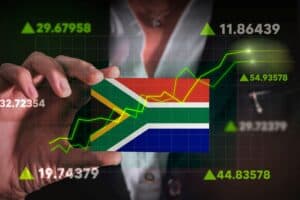There are so many downside risks that the outlook for growth is dim for the next five years.

According to the latest gross domestic product (GDP) figures, the South African economy expanded at the fastest rate since 2007.
But is still hampered by elevated fuel prices, a high tax burden, generally low confidence levels, dismal local demand and dwindling global demand.
Statistics SA announced on Tuesday that GDP grew by 1.2% from October to December 2021, while the annual growth rate for 2021 was 4.9%.
According to Oxford Economics Africa, although the latest data shows the economy expanded by the quickest pace since 2007, real GDP grew by an average rate of only 0.3% per year over the past five years.
Even if the forecast for the next five years is higher, the outlook is not necessarily any brighter, the group says.
“Unless meaningful policy reform starts to happen, foreign investment will remain evasive and the economy will continue to be stuck in a low growth trap, bedevilled by high unemployment and elevated inflation.”
ALSO READ: GDP shows growth in 4th quarter of 2021, but still not quite recovered from Covid
GDP will slow in 2022
The group forecasts that real GDP growth will slow to 1.8% in 2022 as tighter monetary policy and higher inflation weigh on economic activity.
“Over the medium term, we forecast the economy will expand by an average rate of about 1.9% per year which is not enough to produce a sustained decrease in unemployment.”
The war in Ukraine will also have implications for global economies in general, and the group says South Africa will not be spared, although the economy stands to benefit from the favourable terms of trade shocks due to higher commodity prices.
Herman van Papendorp, head of investment research and asset allocation at Momentum Investments, says while stronger than anticipated global growth, sustained commodity prices, a quicker bounce-back in pandemic-hit sectors and faster momentum on local economic reform pose upside risks to growth in the local economy.
The following issues will continue to raise notable downside risks to growth:
- Higher global inflation due to geopolitical conflict;
- A potential hard landing in China in the property market;
- Less accommodative monetary policy;
- Fiscal consolidation;
- Structurally high unemployment; and
- Local energy supply shortages.
“We expect growth to slow to 2% in 2022 and 1.8% in 2023.
“The Ukrainian crisis will likely have a reasonably limited effect on local growth, given a rebound in the country’s terms-of-trade and weak direct trade and investment linkages with Russia and Ukraine.”
ALSO READ: GDP decline: how to turn SA’s ship around
The economy and inflation
Momentum has also revised its headline inflation forecast higher to 5.2% for 2022 to reflect higher international oil prices, while the risk to near-term inflation remains firmly to the upside, given potential sanctions on the Russian oil market.
Carmen Nel, economist and macro strategist at Matrix Fund Managers, says the real GDP growth should have limited implications for the market, and that the Russia/Ukraine crisis will rather remain the dominant factor for risk assets.
The underlying data showed dispersion rather than a broad-based rebound off the weak third quarter 2021 base.
“While agriculture posted a strong performance, the decline in financial, real estate and business services, which is usually a component with low volatility, was a negative surprise.”
However, she points out that it is important to note that this data is almost three months old and has less bearing on the outlook for the balance of 2022 than global developments.
“Growth should be underpinned by the robust terms of trade, but the consumer faces a tougher environment due to rising fuel costs, upside risk to food prices and tightening monetary policy.”
She also does not expect that the GDP figures will have a meaningful impact on the South African Reserve Bank’s Monetary Policy Meeting in two weeks, as it is more likely to focus on the inflation outlook and upside risk stemming from the Russia/Ukraine crisis.






